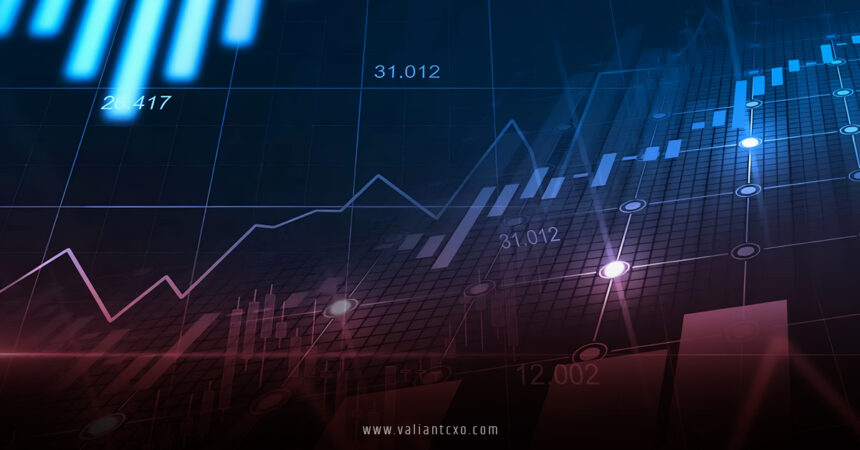Economic and policy shifts are like the tides of the ocean—constantly moving, sometimes predictable, but always impactful. They shape the way we live, work, and plan for the future. Whether it’s a new government regulation, a central bank’s interest rate hike, or a global trade agreement, these shifts ripple through economies, businesses, and households. But what exactly drives these changes, and how do they affect us? In this article, we’ll dive deep into the world of economic and policy shifts, exploring their causes, consequences, and what they mean for you. Buckle up—it’s going to be a fascinating ride!
What Are Economic and Policy Shifts?
Economic and policy shifts refer to significant changes in the economic environment or government policies that influence how resources are allocated, businesses operate, and societies function. Think of them as the gears in a massive machine—when one shifts, the whole system adjusts. These shifts can stem from new laws, trade policies, tax reforms, or monetary policy changes. They’re often driven by political decisions, global events, or economic necessities, like addressing inflation or responding to a recession.
Why do these shifts matter? Because they touch every corner of our lives. A new tax policy might change how much you take home each month. A trade agreement could make your favorite imported coffee pricier—or cheaper. Understanding economic and policy shifts is like having a map in a storm—it helps you navigate the chaos.
The Anatomy of Economic and Policy Shifts
At their core, economic and policy shifts are about adaptation. Governments and institutions adjust policies to address challenges like unemployment, climate change, or technological disruption. For example, when a country faces high inflation, central banks might raise interest rates to cool the economy. This is a classic economic shift. On the policy side, introducing a carbon tax to combat climate change is a policy shift that nudges businesses toward greener practices.
These shifts don’t happen in a vacuum. They’re often interconnected, like dominos falling in a line. A policy to increase minimum wages might boost consumer spending but could also raise business costs, potentially leading to price hikes. It’s a delicate balance, and policymakers are like tightrope walkers trying not to tip the economy into chaos.
Why Do Economic and Policy Shifts Happen?
Economic and policy shifts don’t just pop up out of nowhere. They’re triggered by a mix of internal and external forces. Let’s break it down.
Global Events and Crises
Ever wonder why gas prices skyrocket or why your grocery bill suddenly feels like a mortgage payment? Global events like pandemics, wars, or natural disasters can spark economic and policy shifts. Take the COVID-19 pandemic as an example. Governments worldwide rolled out massive stimulus packages to keep economies afloat, while central banks slashed interest rates. These were rapid policy shifts in response to an unprecedented crisis. Similarly, geopolitical tensions, like trade disputes between major economies, can lead to tariffs or sanctions, reshaping global trade dynamics.
Technological Advancements
Technology is a game-changer, and it’s driving economic and policy shifts faster than ever. The rise of artificial intelligence (AI) is a prime example. Governments are scrambling to create regulations that balance innovation with ethical concerns. Policies around data privacy, like the General Data Protection Regulation (GDPR), are a direct response to technological shifts. These policies don’t just affect tech giants; they impact how small businesses handle customer data, too.
Political and Social Changes
Elections, social movements, and public sentiment can all trigger economic and policy shifts. When a new government comes to power, it often brings a fresh agenda. For instance, a party focused on environmental sustainability might push for green energy subsidies, reshaping the energy sector. Social movements, like those advocating for income equality, can pressure governments to reform tax systems or labor laws. These shifts reflect society’s evolving priorities—like a mirror showing us what matters most at a given time.
The Impact of Economic and Policy Shifts on Everyday Life
So, how do economic and policy shifts hit home? Let’s get personal.
Your Wallet and Cost of Living
One of the most immediate effects of economic and policy shifts is on your cost of living. When a central bank raises interest rates to combat inflation, borrowing becomes more expensive. That means higher mortgage payments or pricier car loans. On the flip side, if a government cuts taxes, you might have more cash to spend or save. But there’s a catch—tax cuts could lead to reduced public services, like fewer road repairs or strained healthcare systems. It’s a trade-off, and economic and policy shifts often force us to weigh the pros and cons.
Businesses and Job Markets
Businesses feel the heat of economic and policy shifts, too. A new trade policy might make it cheaper for a company to import raw materials, boosting profits. But stricter environmental regulations could increase production costs, forcing businesses to adapt or pass costs onto consumers. For workers, these shifts can mean job creation or loss. For example, investments in renewable energy might create jobs in solar panel manufacturing, while automation policies could reduce jobs in traditional industries.
Global Connections
In today’s interconnected world, economic and policy shifts in one country can send shockwaves globally. When a major economy like the United States adjusts its monetary policy, it affects exchange rates, trade balances, and investment flows worldwide. Imagine a pebble dropped in a pond—the ripples don’t stop at the shore. Developing nations, in particular, can feel the brunt of these shifts, as they often rely on stable trade and investment from larger economies.
Navigating Economic and Policy Shifts: What Can You Do?
Economic and policy shifts can feel overwhelming, like trying to steer a boat in choppy waters. But there are ways to stay afloat.
Stay Informed
Knowledge is power. Keeping up with news from reliable sources, like The Economist or World Bank reports, can help you understand economic and policy shifts. What’s the latest tax reform? How are trade policies affecting your industry? Staying informed lets you anticipate changes and make smarter decisions, whether it’s adjusting your budget or rethinking your career path.
Adapt and Diversify
Flexibility is key in a world of constant economic and policy shifts. For individuals, this might mean learning new skills to stay relevant in a changing job market. For businesses, it could involve diversifying supply chains to avoid disruptions from trade policies. Think of it like planting a garden—you don’t put all your seeds in one pot. Spreading your resources reduces risk.
Advocate for Change
Your voice matters. Economic and policy shifts often start with public demand. Whether it’s supporting policies for affordable healthcare or pushing for sustainable practices, getting involved in local or national discussions can shape the future. Attend town halls, vote, or join advocacy groups—small actions can add up to big change.
The Future of Economic and Policy Shifts
What’s next for economic and policy shifts? Predicting the future is like reading tea leaves, but some trends are clear. Climate change is driving policies toward sustainability, with governments investing in green technology and carbon-neutral goals. Technology, especially AI and automation, will continue to reshape labor markets and regulatory frameworks. And as global economies recover from recent crises, we’ll likely see more policies aimed at balancing growth with stability.
The pace of change is accelerating, too. Economic and policy shifts that once took decades now happen in years or even months. This means staying agile—whether you’re a policymaker, a business owner, or just trying to pay your bills—is more important than ever.
Conclusion
Economic and policy shifts are the heartbeat of our global economy, pulsing with change and opportunity. They can be daunting, but they also open doors to innovation, growth, and progress. By understanding what drives these shifts and how they impact us, we can navigate them with confidence. Whether it’s adapting to new regulations, seizing opportunities in a shifting market, or advocating for policies that matter, you have the power to ride the wave of economic and policy shifts. So, stay curious, stay informed, and embrace the change—it’s the only constant in this dynamic world!
FAQs
1. What are some recent examples of economic and policy shifts?
Recent economic and policy shifts include the U.S. Federal Reserve raising interest rates to combat inflation in 2023 and the European Union’s carbon border adjustment mechanism, which taxes carbon-intensive imports. These shifts aim to stabilize economies and promote sustainability.
2. How do economic and policy shifts affect small businesses?
Economic and policy shifts, like new tax laws or trade tariffs, can increase costs or create opportunities for small businesses. For example, a shift toward green energy subsidies might benefit businesses in renewable sectors but raise costs for those reliant on fossil fuels.
3. Can individuals influence economic and policy shifts?
Yes! Individuals can influence economic and policy shifts by voting, participating in public consultations, or supporting advocacy groups. Public pressure often shapes policies, like those addressing income inequality or climate change.
4. Why do economic and policy shifts vary between countries?
Economic and policy shifts vary due to differences in political systems, economic conditions, and cultural priorities. For instance, a country with high unemployment might prioritize job creation policies, while another focuses on environmental regulations.
5. How can I prepare for future economic and policy shifts?
To prepare for economic and policy shifts, stay informed through credible sources, diversify your income or investments, and develop adaptable skills. Engaging in community discussions can also help you anticipate and influence change.
For More Updates !! : valiantcxo.com


